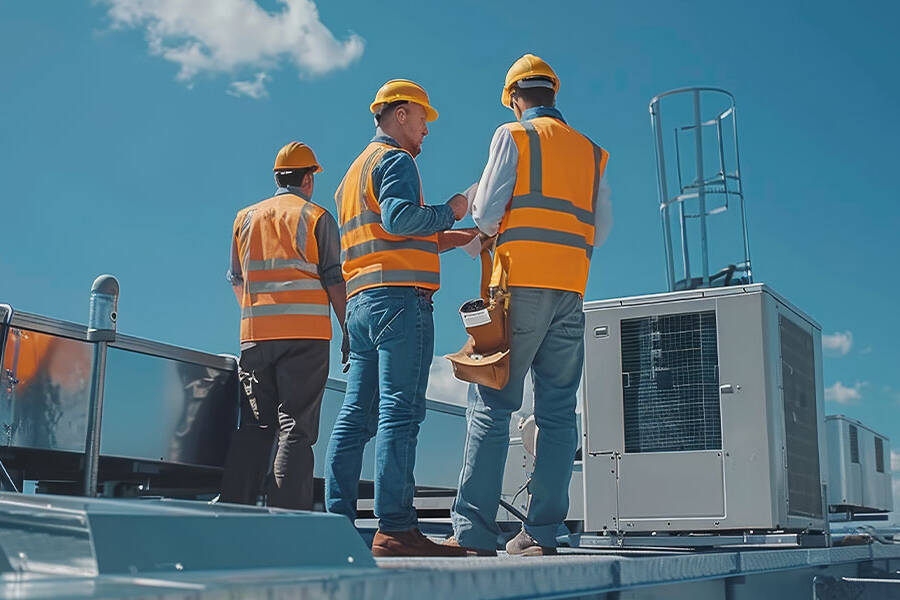Blog & News
Data Driven Proactive Maintenance for Multifamily and Student Housing
Over the years, we’ve learned from our clients that one of the biggest pain points for onsite property managers is having to rely on residents to call in and report a maintenance issue – which is often not done until long after the problem initially started, giving teams no other choice than to handle the issue reactively. Not only does reactive maintenance usually mean that the repair is more expensive, but oftentimes, these service calls are received after-hours – further increasing costs by having to send personnel out at the overtime rate.
This is why the market for IoT driven proactive maintenance solutions is now booming. These solutions leverage smart devices and data reporting to remotely identify any potential issues and automatically notify staff in real time, removing the need to wait for residents to report maintenance issues. This proactive strategy empowers properties to save on man hours, reduce maintenance and utility costs, and increase property NOI.
So what kind of data would give the best insight to a potential maintenance issue existing?
Let’s consider HVAC units. Inefficiently performing HVACs present all kinds of problems for property managers and indicate a number of issues that could be occurring within a residence, so the ability to immediately identify these units is one of the most effective ways for operators to reduce costs. One data set that most accurately signifies an inefficiently performing HVAC is unit runtime – specifically, when insight is given to unit runtime and thermostat set point. If a thermostat in a residence is set to a reasonable temperature (relative to the temperature outside) but the HVAC appears to have been running consistently for an unusually long period of time, this can signify a unit in need of servicing or possibly a less expensive fix, like a window being mistakenly left open. Either way, proactively dispatching the maintenance team to assess the situation is the best way to avoid unnecessarily higher repair costs. Even if the prolonged runtime is just due to an open window, that window remaining left open while the HVAC continues to run can quickly turn into a greater, more expensive problem.
This HVAC runtime data can provide further valuable insight when compared against the same data from other residences. Even if an HVAC unit may not have necessarily malfunctioned yet, it can be an effective way to pin point a unit that’s on its way there. If four different residences in the same area of a building have the same thermostat set point and the platform reports that the HVACs in all but one of the residences are displaying a similar amount of unit runtime, the HVAC taking slightly longer to achieve that same set point can be indicative of a unit that is in need of servicing. For properties that have not installed a solution that automatically monitors HVAC runtime, units that have not necessarily reached the point of malfunction but are still in dire need of a tune up to optimize performance are usually only caught during routine maintenance inspections – which don’t always happen all that often.
In addition to helping to avoid maintenance repair costs, an effective solution provides opportunities for expense reduction in other areas. As most people are aware, energy costs are rapidly rising. HVAC unit run time is one of the biggest contributors to increased utility bills – the longer an HVAC runs, the higher the utility bill. Through a centralized platform, onsite teams have the ability to remotely adjust thermostat set points or implement scheduling to ensure optimal energy consumption in residences, thereby lowering utility costs. This has proven to be particularly helpful when it comes to managing vacant units.
One of the greatest benefits of a platform that collects and analyzes this kind of data is that property teams don’t need to sit at their desk and actively monitor the data themselves. Proactive maintenance solutions, like TrustHab, utilize a real time alerting system that automatically notifies the designated personnel when a potential problem arises. Alerts can be customized to display different priority levels, allowing teams to address those that are considered critical first.
With TrustHab, HVAC runtime data is just one of many data sets that is collected and analyzed. Our solution also features a leak detection system, humidity mitigation, and smart locks and access control. Smart devices work together with a centralized platform to deliver a proven and effective way for onsite teams to proactively address potential maintenance issues, enhance the resident living experience, substantially reduce costs, and increase NOI.
To take a tour of our platform to learn more about the additional data sets we automatically collect and analyze for properties, reach out to us at contact@trusthab.ai. TrustHab provides substantial cost saving opportunities for operators and offers a quick pay back – let us tell you how.




